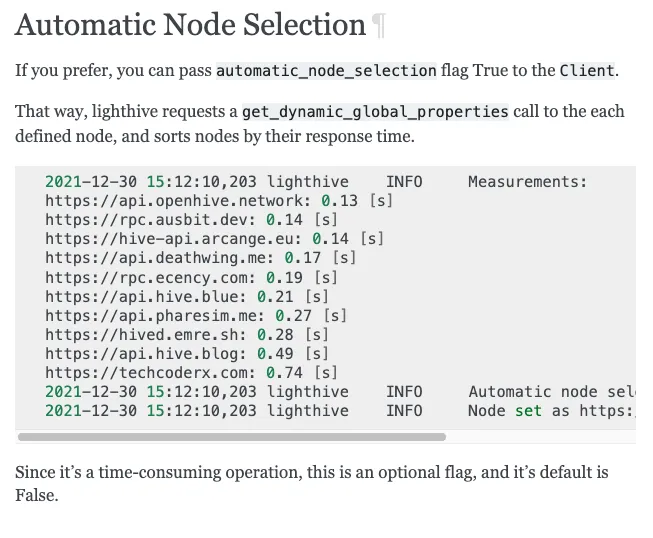
A new version of Lighthive is pushed to the Python package index with the tag 0.3.0 . As usual, pip install lighthive --upgrade is enough to get the latest version.
As a client, it's important to select the closest/fastest node to your server.
For example, if your script/app runs in a server at Europe, it makes sense to connect one of the Europe nodes. Same logic applies for the different parts of the world; for Asia, US, etc.
Now, we have that selection automatic at Lighthive; If you pass automatic_node_selection flag True to the Client instance, nodes will be sorted by the response time.
Related measurement calls are done via asyncio and httpx, concurrently. This speeds up the process, however, it still takes some time to request all nodes. That's why automatic_node_selection is disabled by default.

Example usage:
import logging
from lighthive.client import Client
c = Client(loglevel=logging.DEBUG, automatic_node_selection=True)
Logging output:
2021-12-30 17:20:28,515 lighthive INFO Measurements:
https://rpc.ausbit.dev: 0.12 [s]
https://api.openhive.network: 0.12 [s]
https://hive-api.arcange.eu: 0.12 [s]
https://hived.emre.sh: 0.14 [s]
https://api.deathwing.me: 0.15 [s]
https://rpc.ecency.com: 0.16 [s]
https://api.hive.blue: 0.19 [s]
https://api.pharesim.me: 0.28 [s]
https://api.hive.blog: 0.46 [s]
https://techcoderx.com: 0.77 [s]
2021-12-30 17:20:28,516 lighthive INFO Automatic node selection took 0.81 seconds.
2021-12-30 17:20:28,516 lighthive INFO Node set as https://rpc.ausbit.dev
Also updated the default node list with the up to date public nodes. See the related pull request.